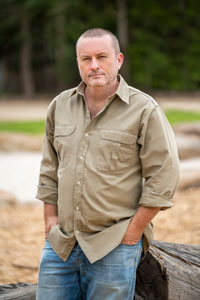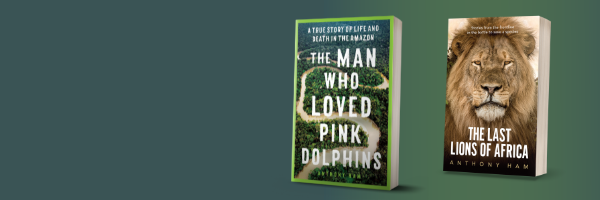In his book Silence in the Age of Noise, Erling Kagge, a Norwegian polar explorer, describes how, in 1986, he was sailing along the Chilean coast in the South Pacific when, sometime between midnight and 4am, he heard “a sound that seemed like a long, deep breath just west of the boat”. He turned and saw what he took to be a fin whale, one of the largest creatures on earth.
“For a few minutes,” Kagge wrote, “we travelled the same course, my whale and I. A few more times I heard that deep sound coming from the blowhole on its back, slowly in and out of the lungs, before the whale eventually vanished into the ocean. The world was not quite the same. I remained standing there, my hands on the wheel, listening and watching for that dark spine with the single fin, but I never saw my whale again.”
Reading that passage for the first time, I nodded in recognition. Experiencing such a moment and writing about it in a way that affects others: this is why I write.
As a writer, my work often takes me to the wild places of our planet. And the more I write about these places and the people and the wild creatures who inhabit them, the more obsessed I become with the craft and the mechanics of how to capture in words nature’s beauty with the same ringing clarity that Kagge brings us his encounter with the whale.
Kagge’s description of his encounter with the whale represents the best kind of nature writing, which can take us out of our world and into another: I was with Kagge on the bridge out on that wild and lonely sea. But how does he achieve it?
When I was just starting out as a writer, author and all-round writing guru Antoni Jach gave me a piece of advice that I still follow religiously to this day. He told me to go away and study the writers I most admired, to do a deep dive into their work to see how it is that they create beauty, or inspire in the reader a particular reaction.
Using Antoni Jach’s method on Kagge’s passage, I started to see that it is the calm simplicity of the language and the closely observed detail that create the profound sense of place.
Taking this approach further, I knew exactly another writer I wanted to study. Since my earliest days as a writer, I have loved the work of Peter Matthiessen: I still consider The Snow Leopard (1978) to be a highpoint of my chosen genre of narrative non-fiction, of storytelling in nature and travel writing. Antoni’s counsel set me off on a multiple-notebook quest – first Moleskine, now Leuchturm1917 – to analyse my favourite passages from Matthiessen’s work.
Along the way I learned – and am still learning –about rhythm, about pacing, and, as with Kagge, about the importance of closely observed details. More than anything else, however, I learned that a true sense of place requires that nature itself become a protagonist or a character with just as much agency as the human characters or cultures, or the animal species, that appear in my work. In picking apart Matthiessen’s lyrical evocation of the natural world, I came to realise how often nature appears as the subject in an active-voice sentence.
In one passage from his deeply spiritual foot journey across the Himalaya into the silent valleys of Dolpo, he writes: “From deep in the earth, the roar of the river rises. The rhododendron leaves along the precipice are burnished silver, but night still fills the steep ravines where southbound migrants descend at day to feed and rest. The golden birds fall from the morning sun like blowing sparks that drop away and are extinguished in the dark. With the first sun rays we come down into still forest of gnarled birch and dark stiff furs. Through light filtered through the straying lichens, a silver bird flies to a cedar, fanning crimsoned wings on the sunny bark. Then it is gone, leaving behind a vague longing, a sad emptiness.”
Or this sentence, which I read often merely for the sheer pleasure of doing so: “Where bamboo appears, four thousand feet below our Dhaulagiri camp, a log bridge crosses the torrent and the trail climbs an open, grassy slope of stolid oaks and lithe wild olives that dance in the silver breeze of afternoon.”
Life often takes over, and it is some time since I have re-read Matthiessen. But I was reminded to do so recently when, one morning, I was scrolling through the morning news and found myself overwhelmed by Antarctic Sea ice melting, by Europe and Hawaii on fire, by stories of personal tragedy. The world was, it appeared, coming apart at the seams.
So I picked up The Snow Leopard and read. Slowly, quietly, I lost myself in what I was reading, transported elsewhere, strangely uplifted for a time, to a better place. A sense of calm descended. As with Erling Kagge and his whale, after reading for a few minutes my world was not quite the same. And I remembered that this is not only why I read. Learning how to create such moments for readers is also why I write.
Anthony Ham is the author of The Last Lions of Africa (2020) and The Man Who Loved Pink Dolphins (2022), both of which were published by Allen & Unwin. He is currently working on his third book, which is set in the Australian outback. A former refugee lawyer, he now writes for the New York Times (both Science & Travel sections), Smithsonian Magazine, Virginia Quarterly Review (VQR), National Geographic Traveler, The Age, Sydney Morning Herald, The Monthly, Outback Magazine, BBC Wildlife, Lonely Planet Traveller, Africa Geographic, The Independent, and others. He has also written more than 150 guidebooks for Lonely Planet.


I am so delighted to find someone who knows and loves The Snow Leopard published in 1979. I picked it up in a secondhand shop a few years ago. Its pages now are brittle and brown, the spine cracked. My copy bulges with turned-down corners and post-it notes. I am reading it again, marking all the parts that call to me. The poetry in his prose is exquisite and you have chosen some very special sections for this blog. Thank you
Thank you for this blog Anthony. I have been meaning to read the Snow Leopard for ages, The passages you have chosen were sublime, pulsing with the rythym of poetry and of nature itself. I’m buying myself a copy today.
Ah, I remember reading the Snow Leopard in my teens. I wonder if that copy has travelled everywhere with me since, must have a look. And also, I am reminded to pick up a couple of favourite books and read them much, much more closely. Thank you!
I have just reserved a copy of Snow Leopard at my local library
Rubina, this is great! You should also read Anthony’s books – they’re so so good.